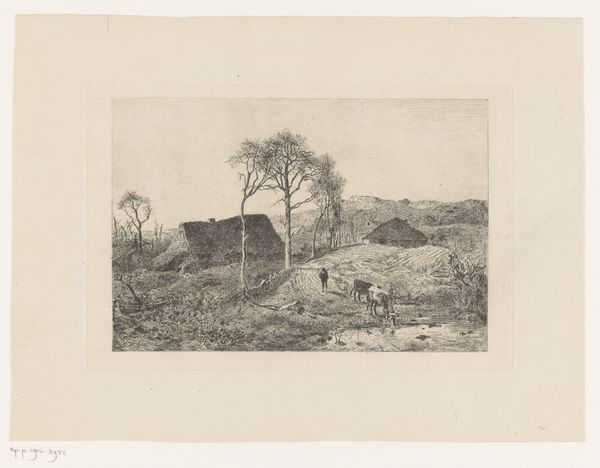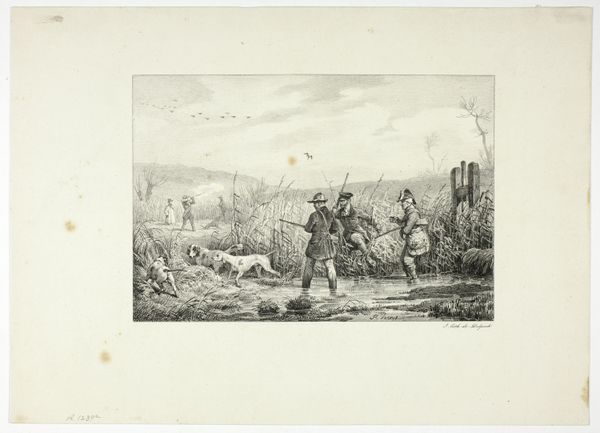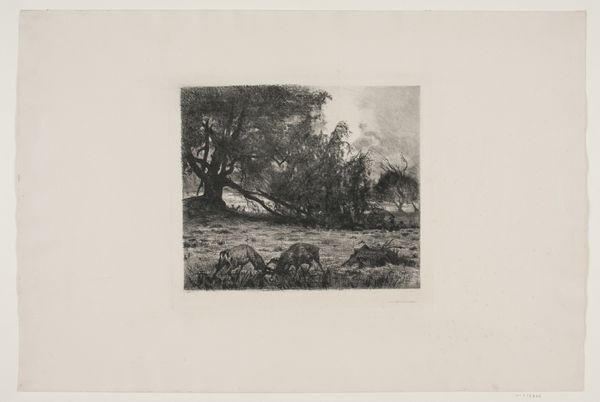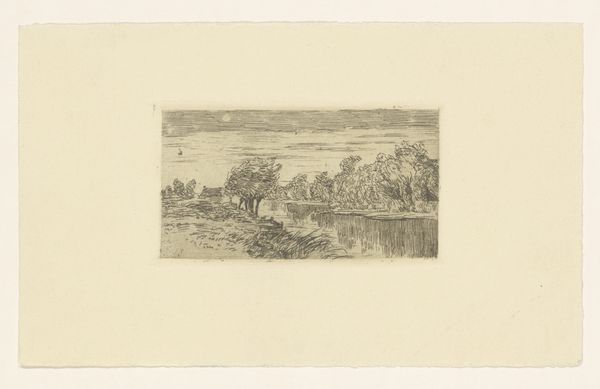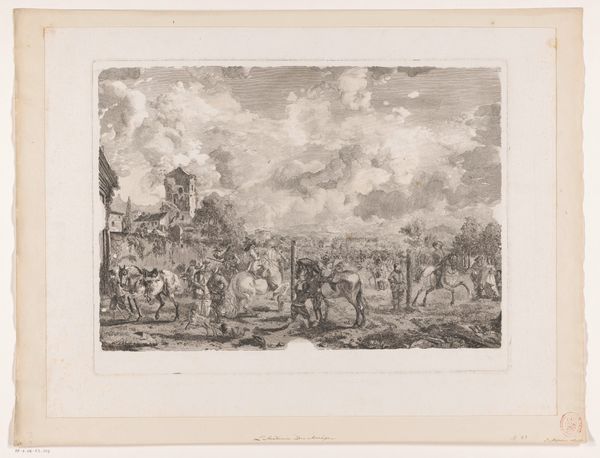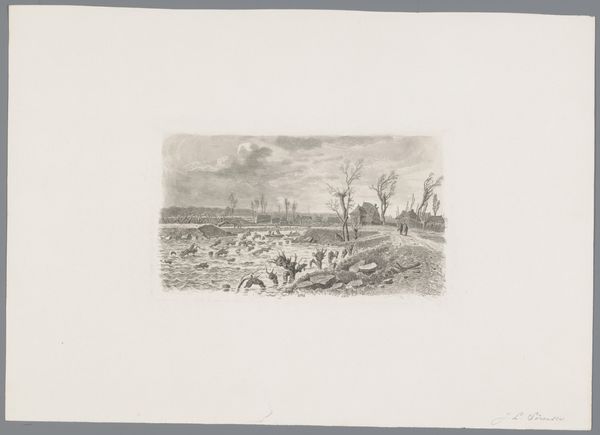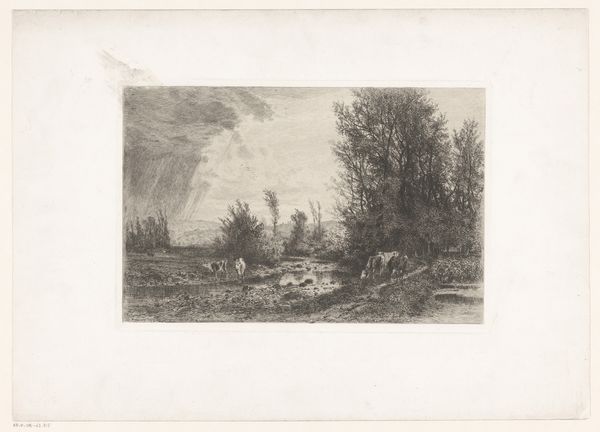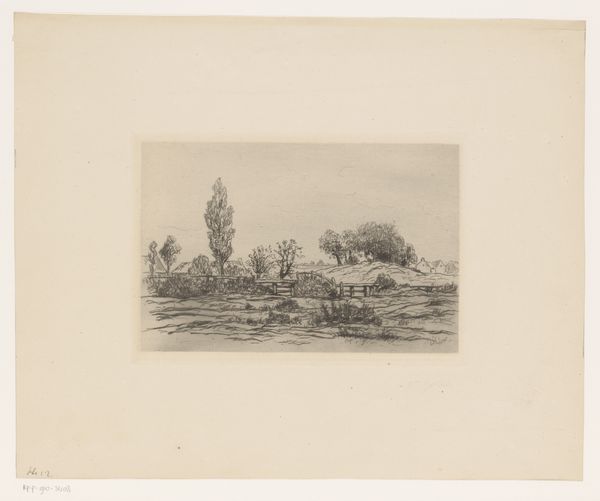
print, etching
# print
#
etching
#
landscape
#
realism
Dimensions: height 192 mm, width 282 mm
Copyright: Rijks Museum: Open Domain
Editor: Here we have "Groep koeien en een figuur in een landschap," or "Group of Cows and a Figure in a Landscape" by Lambert Jacquelart, made sometime between 1830 and 1910. It's an etching, a kind of print. There’s a really interesting texture created by the etching – you can almost feel the rough grass under the cows' feet. What catches your eye when you look at this piece? Curator: What strikes me immediately is the interplay of light and shadow. Consider the distribution of tonal values. Jacquelart has skillfully used the etching technique to create a sense of depth, wouldn't you agree? Notice how the foreground is denser, darker, richer, gradually lightening as we move towards the horizon line. The structural composition follows the arrangement of dark vegetation to the slightly graded tree groupings and sky. How do these tonal shifts impact the overall structure and sense of depth? Editor: I think the lighter background does make the cows stand out more, drawing your focus. But are the cows the main subject or is the landscape itself more important? Curator: That's a valid question, and the formal elements suggest a dynamic equilibrium. Note how the clustered cows, with the one distinct standing figure offset to the right, are nearly equivalent in space to the treeline, which pushes back to an undefined horizon. It is as much about representing pastoral harmony and balance as it is about capturing a specific animal in a space. Editor: So, by examining the formal elements—the tonal values, composition, and spatial arrangement—we're led to see a deeper, perhaps more idealized representation of nature and rural life. Curator: Precisely. The art resides in how these elements come together. Ultimately, the merit of this work hinges on our own subjective response to the forms of representation, its tonality, spatial construction, and how these converge.
Comments
No comments
Be the first to comment and join the conversation on the ultimate creative platform.
